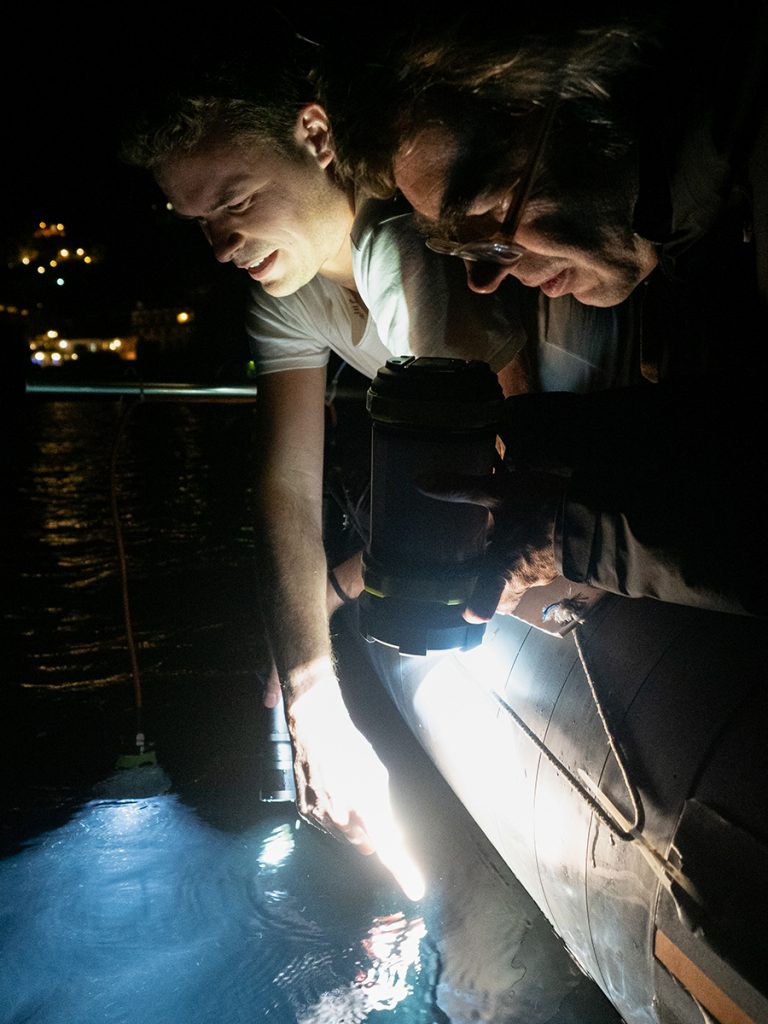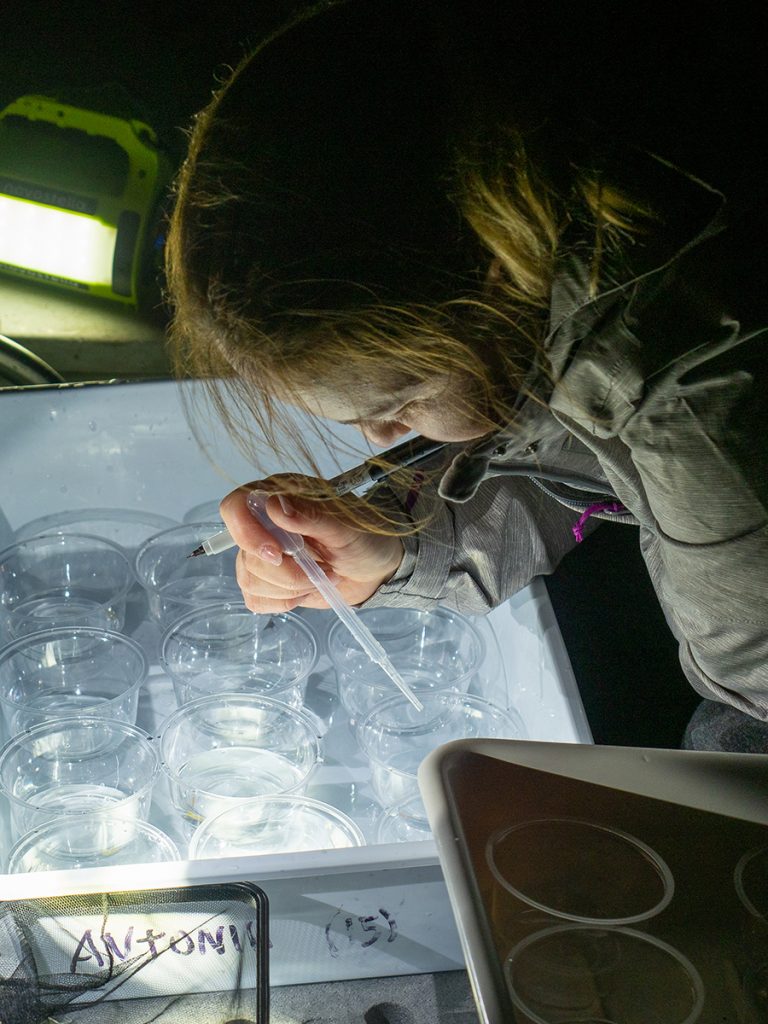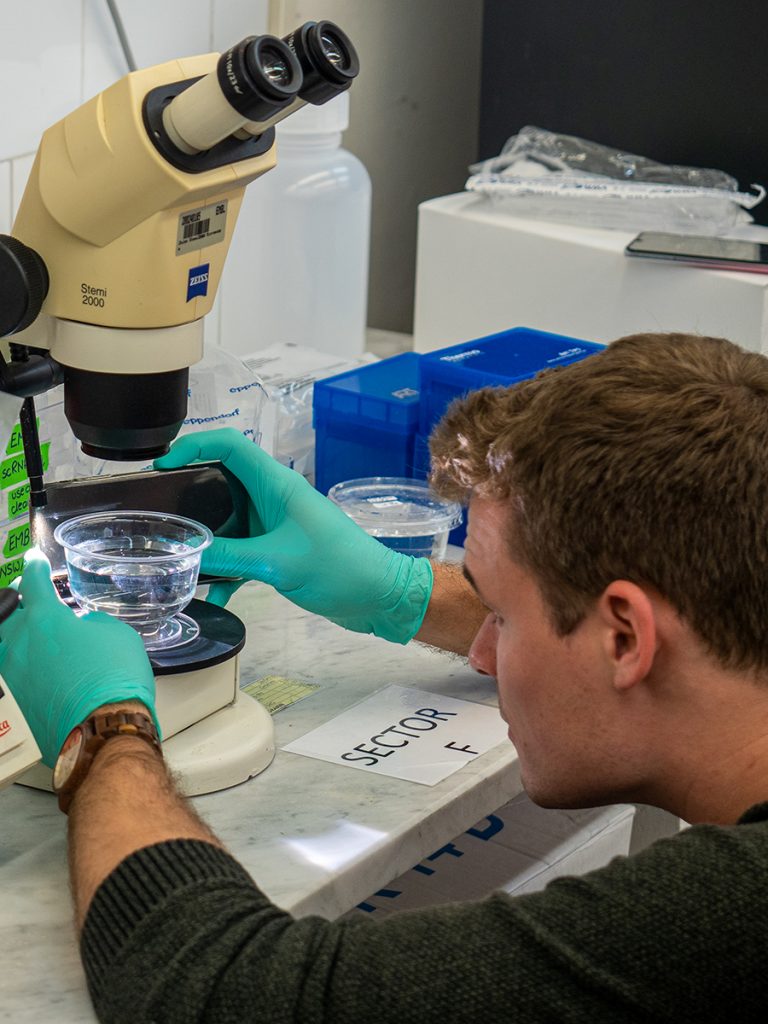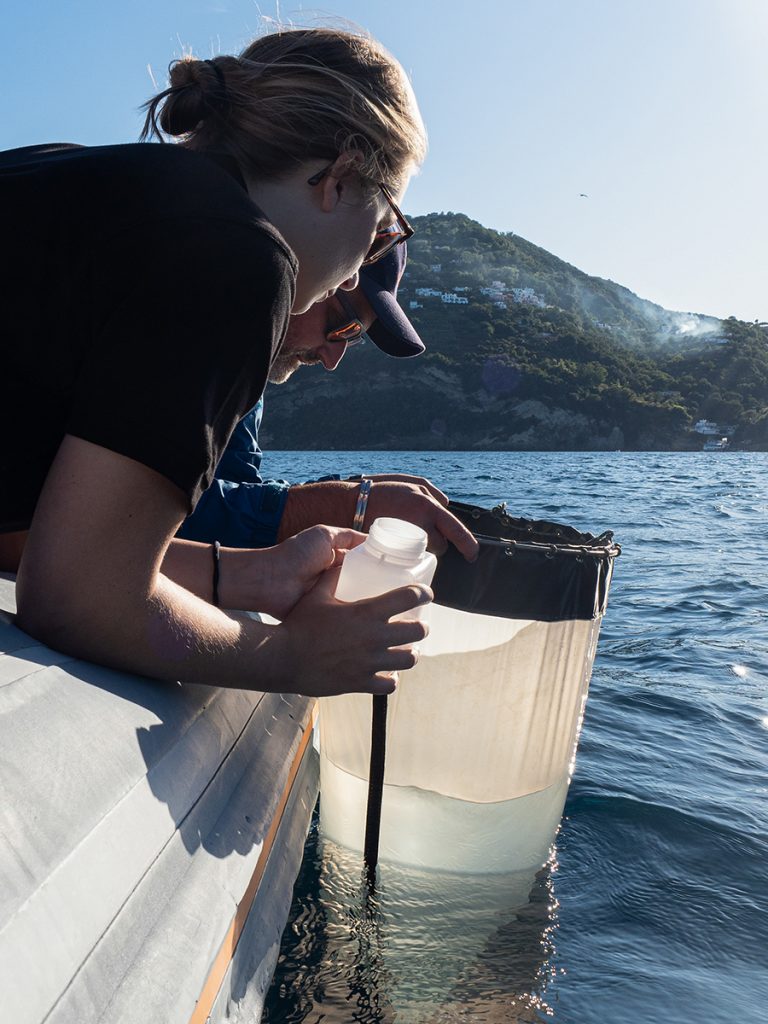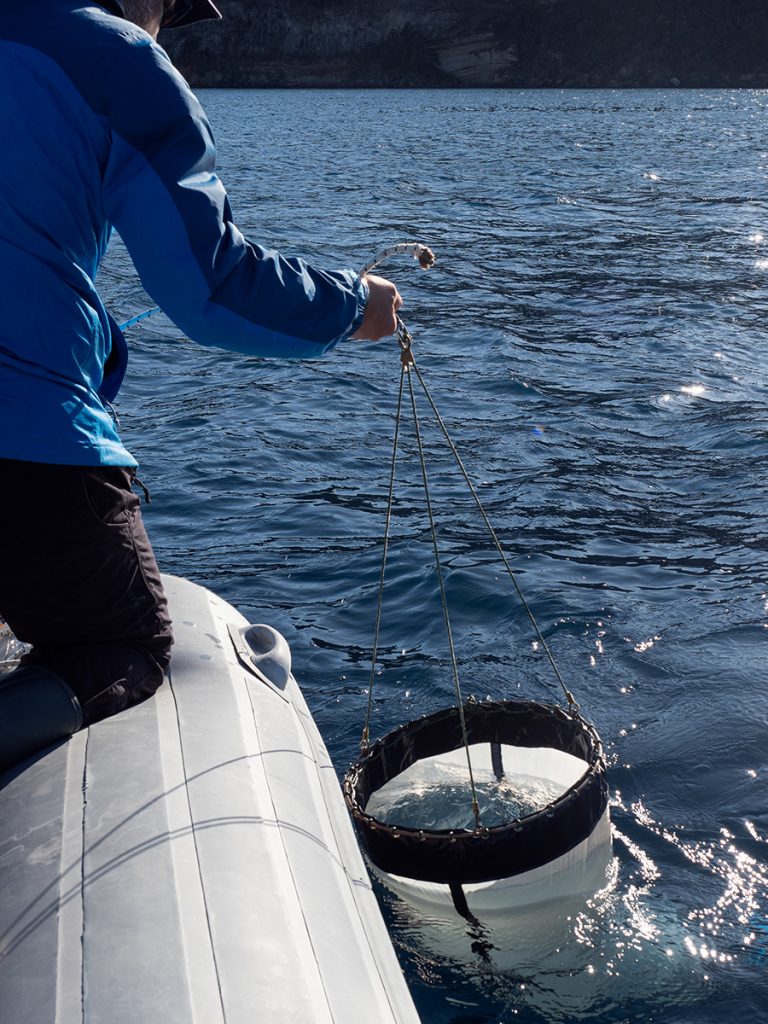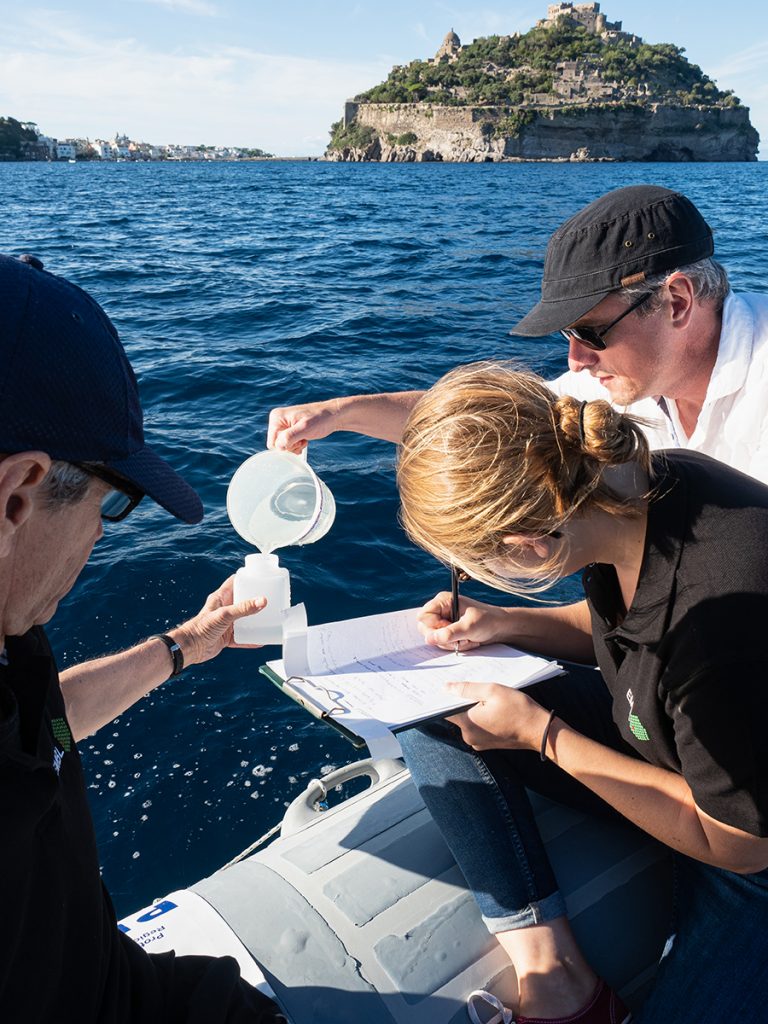EMBL scientists plan to study life in its natural context to help address global challenges

How does the environment affect animals, plants, and microbes? Organisms are perpetually interacting with each other and with the natural world around them, and have to adapt to changing environmental conditions. But how does this interplay work at the molecular level? Does the environment trigger changes to the structures inside cells, or does it affect the function of genes? And could we understand these changes to identify - and potentially mend - ecosystems threatened by pollution or climate change?
Planetary Biology
These are some of the questions EMBL scientists aim to answer as part of an innovative research theme named Planetary Biology, which combines molecular biology research with aspects of ecology, evolution, and geosciences. The overarching goal is to understand life in the context of its environment, and across scales. "Life on Earth doesn't exist in isolation. Species interact and react to changes in their environment within milliseconds, centuries, or geological ages. To fully understand life, we have to look at these interactions and study them at the level of molecules, cells, organisms, ecosystems, and the entire planet," explains Detlev Arendt, Senior Scientist and Group Leader at EMBL Heidelberg, who's one of three scientists leading this research theme.
Ecosystems around the world are changing at an unprecedented rate. Naturally occurring changes are accelerated by human activities, which means organisms must adapt faster to changing environments than they had to in the past. Many ecosystems are threatened by factors such as increasing temperatures, depletion of freshwater supplies, loss of biodiversity, and chemical contaminants.
These changes also favour the emergence of new pathogens, as well as the development and spread of antimicrobial resistance, which can reduce the effectiveness of our antibiotics. "Both processes can pose a serious threat to us. Human health is therefore closely linked to planetary health. If we want to tackle these environmental and societal challenges efficiently, we need a better understanding of how they arise," says Paola Bertucci, Research Scientist in Detlev's group, who is involved in coordinating the research theme's activities.
Collaboration is key
To gain this understanding, EMBL scientists want to study selected ecosystems and organisms, in close collaboration with researchers across Europe. The Planetary Biology theme builds on EMBL's existing research and brings together many scientific disciplines, from molecular biology to ecology and theoretical approaches. An important goal of the research theme is to create a pan-European network of scientists and research institutions to combine strengths, share expertise, and develop synergies to create the new field of Planetary Biology research.
Platynereis dumerilii mate by swimming to the surface and releasing eggs and sperm into the water - and they do so only at night during a new moon. EMBL scientists collected sexually mature Platynereis and let them mate in plastic cups, obtaining thousands of fertilised eggs in each vessel. These were later analysed in the lab. Credit: Patrick Müller/EMBL
"As part of the research theme, EMBL scientists will interact closely with colleagues from other research institutes. We aim to bring together molecular biologists, ecologists, and epidemiologists, and involve expertise from chemists, physicists, engineers, and data scientists," says Rainer Pepperkok, EMBL's Director of Scientific Core Facilities and Scientific Services, who co-leads the Planetary Biology research theme. Collaborations across EMBL's member states will be essential in making best use of existing research facilities and knowledge, and advancing the research of all partners.
From lab to field
Planetary Biology research involves studying animals, plants, fungi, and microbial communities in their natural environment. The approach involves detailed investigation, going down to the cellular and molecular level. Scientists can measure how genes are used in different cell types and different organisms. They can also study the shapes of cells and the proteins and structures within them. Ultimately, the scientists want to understand how all these building blocks of life function in relation to environmental conditions.
All of this is possible thanks to an impressive toolkit of experimental methods, including many developed at EMBL. What would have been technically impossible just a few years ago can now be achieved. "We have the technology to study molecules and genes in single cells. Imaging methods allow us to see where each of these cells is located in the body of multicellular organisms. We can also observe changes in cellular structures, molecules, and gene functions over time - and we have the computer power to combine and analyse all the data," says Peer Bork, Director of EMBL Heidelberg (Scientific Activities), who coordinates the research theme together with Rainer and Detlev.
One trip, three projects
In 2019, a group of EMBL scientists travelled to the Italian city of Naples and the nearby island of Ischia. The region is a popular destination for tourists - but the purpose of their trip was not sightseeing. The scientists were there to collect samples of microbes and marine organisms at several spots along Ischia's coast, in collaboration with the Stazione Zoologica Anton Dohrn di Napoli (SZN), a marine research institute in Naples, which also runs a research station on Ischia.
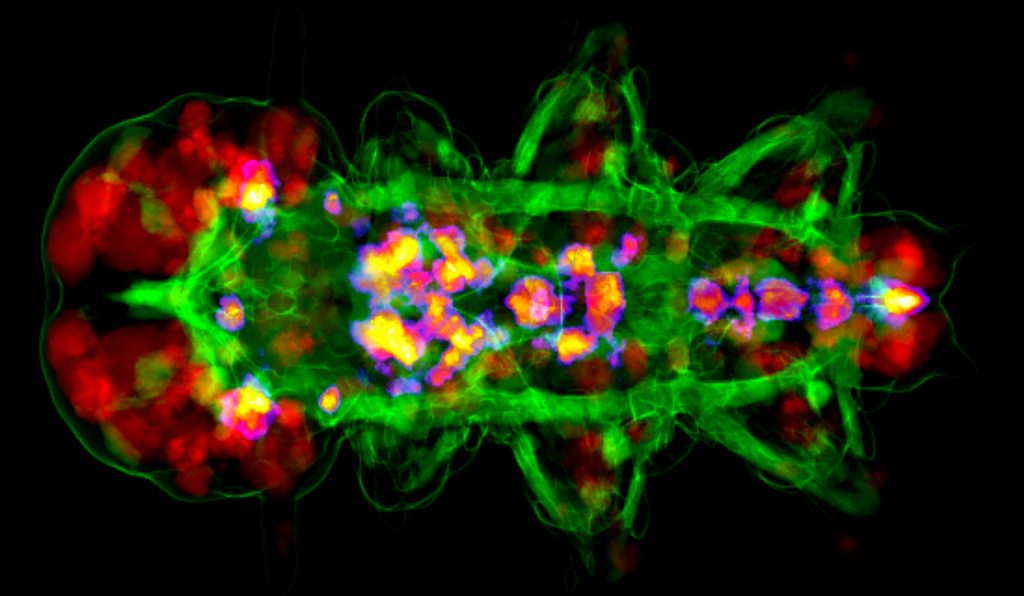
The visit to Naples included discussions with local scientists and collaborative fieldwork in Naples and on Ischia. For Detlev Arendt and his group, it was the segmented marine worm Platynereis dumerilii that occupied their attention. A few centimetres in length, Platynereis thrives along European coasts in a variety of habitats. The broad distribution of Platynereis suggests a high level of adaptability, so the scientists are keen to find out how genetic variations allow these worms to survive under widely varying conditions, and how these variations are manifested at the cellular and organismal level. "Platynereis is even found in places where volcanic thermal springs acidify the seawater, and could therefore tell us how organisms might adapt to the acidification of seawater that occurs as a result of climate change," says Paola.
Meanwhile, scientists working in Yannick Schwab's team focused on phytoplankton - tiny aquatic organisms that obtain their energy from sunlight. The Schwab team is developing advanced imaging techniques to study how the structures inside cells are linked to the expression of genes in phytoplankton. Their work requires the application of electron microscopy and single-cell sequencing techniques, which need to be adapted for fieldwork. "This expedition taught us how complex and diverse the samples we collect in the field can be," says Yannick.
EMBL scientists and their colleagues collected samples at various locations near Naples and around Ischia to study phytoplankton. Credit: Patrick Müller/EMBL
Kiley Seitz from Peer Bork's group collected soil samples to study the microbes living on the coast. Peer's group is interested in the variation of microbial communities and the diversity of their genes, and in the effects of the environment on microbial communities. Samples of the marine microbes in the Naples area had already been collected by researchers from the SZN, and by members of the Tara Oceans expedition (2009-2013), which investigated marine biological diversity across the globe. By comparing terrestrial and marine microbial communities, the scientists hope to better understand whether and how these communities exchange genes or even entire species. The researchers also want to find out how microbes and microbial communities are influenced by environmental pollutants, such as pesticides or antibiotics.
The experiments performed in Naples and on Ischia served as pilot studies to explore how molecular readouts can inform us about the interactions of organisms with their environment and with each other. For example, in this area the scientists found flourishing communities of previously unknown species that belong to a group of single-celled organisms called archaea. These species probably help the complex biological communities in the volcanic environment to utilise nutrients. The scientists tested standardised procedures, experimental methods, and logistics for sample collection and handling. This has set the stage for follow-up pilot studies and a scientific expedition that aims to study the interactions of marine and terrestrial species in ecosystems along Europe's coastlines.
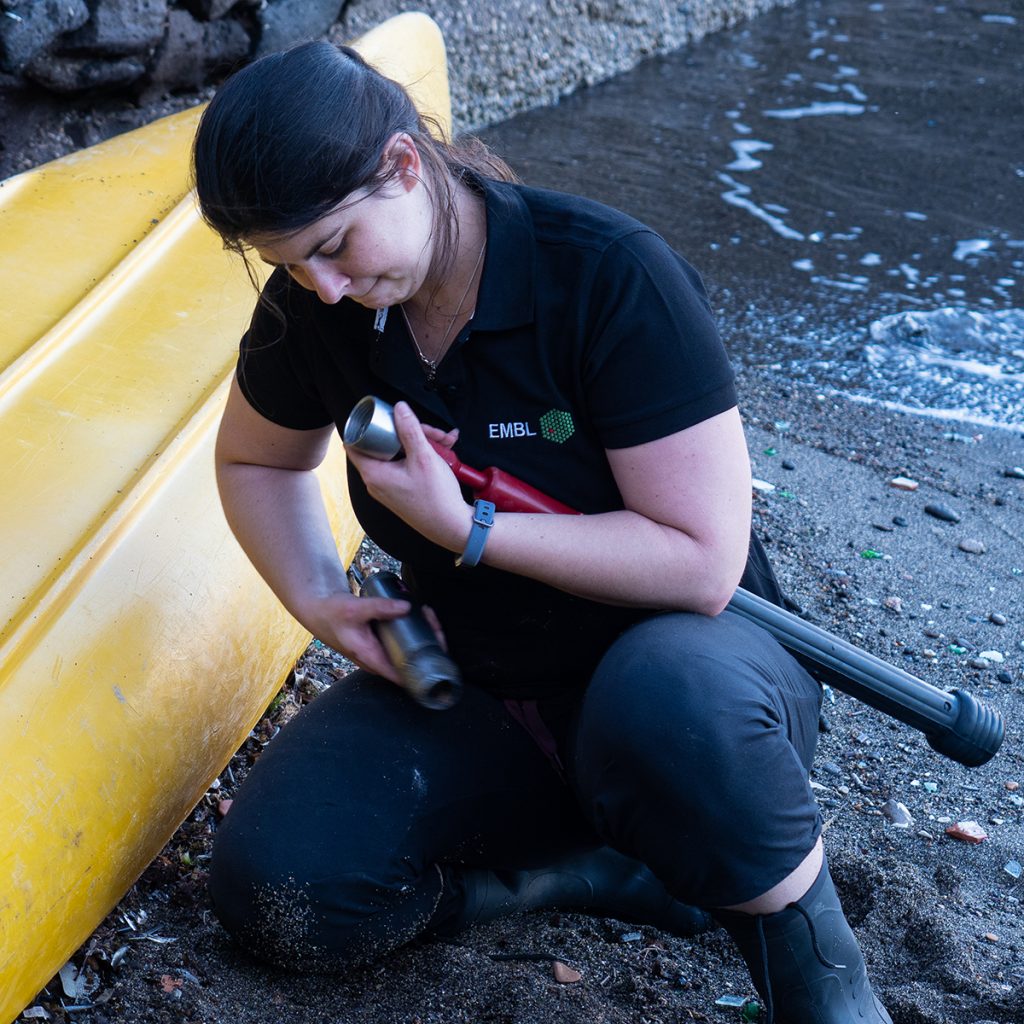
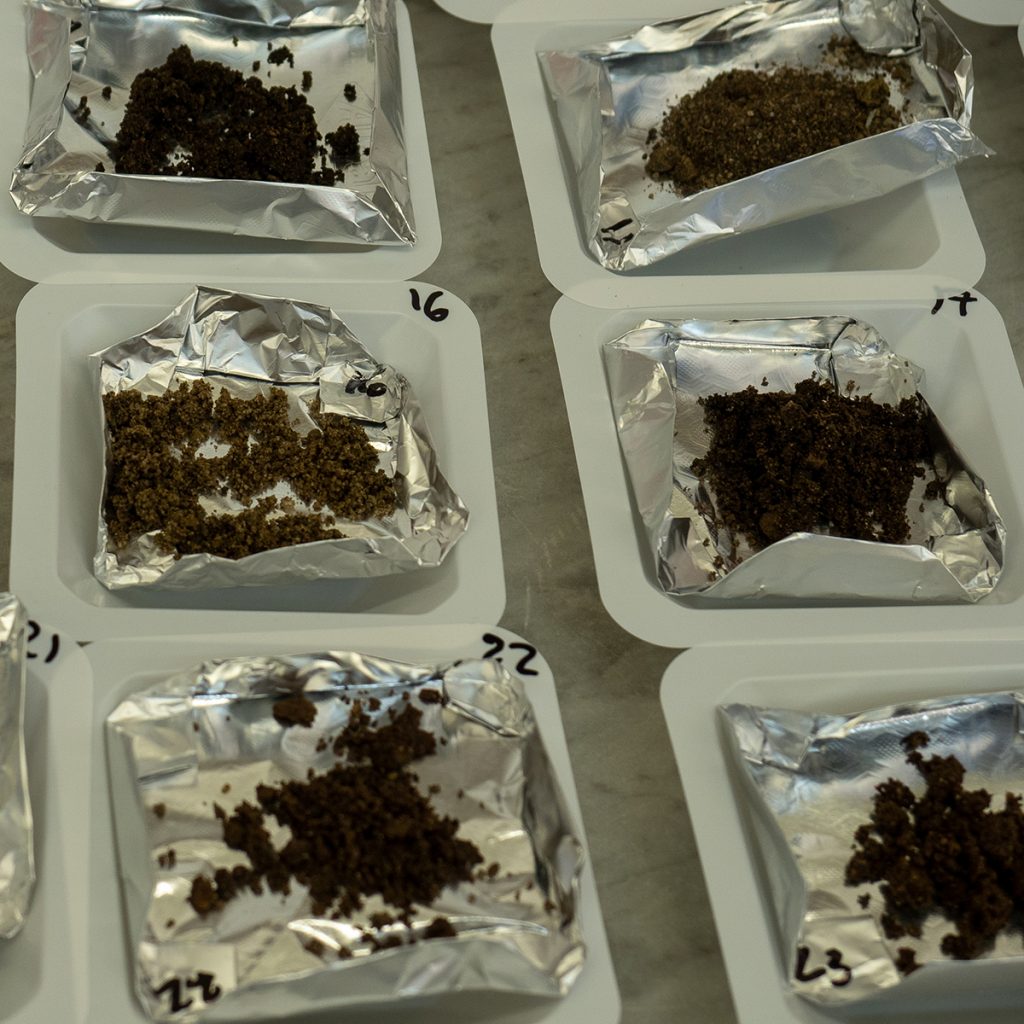
Kiley Seitz from Peer Bork's group collected soil samples to study the microbes living on the coast. The samples were dried and further analysed in the lab. Credit: Patrick Müller/EMBL
Advanced research infrastructures to study ecosystems
Another experimental approach is to study organisms in a complex environment controlled by researchers. Small organisms can be housed in bioreactors - reaction vessels that hold cells, microbes, or other single-celled organisms under precisely controlled conditions. Bioreactors allow scientists to adjust environmental factors, such as temperature or nutrient availability, and observe how the organisms adapt.
Larger systems are mesocosms and ecotrons, which can be used to reproduce natural ecosystems in a simplified form. Depending on the type of ecosystem studied, mesocosms and ecotrons can be containers of soil, tanks of water, greenhouses, or fenced-off areas of grassland, inhabited by organisms of at least two species. When they're closed off from their surroundings, these systems offer scientists control over many environmental factors, such as the amount of light, air temperature, humidity, and precipitation. But they can also be operated in a way that allows exchange with the physical world around them.
"Scientists have been exploring for a long time how the variation of individual environmental parameters influences organisms in the lab. But what we really want to know is how organisms react to a mix of changing parameters, and how they influence each other in their response to the environment," says Detlev.
Studying environmental influences on organisms in the lab
One of the organisms that can be studied in the lab under complex, controlled environmental conditions is Platynereis dumerilii; another is the starlet sea anemone, Nematostella vectensis, which is studied by Aissam Ikmi and members of his group at EMBL Heidelberg.
Sea anemones are special animals. Like corals, sea anemones are sessile, which means that they spend their entire life in the same spot. Unlike most other animals, which have fixed numbers of legs, wings, or fins, sea anemones can grow additional tentacles - the 'arms' they use to catch food from the seawater. How exactly tentacle growth is regulated, and how it is triggered by environmental signals, was unknown until recently.

Members of the Ikmi group and colleagues have now discovered that the growth of new tentacles in sea anemones is controlled by the amount of food the animals eat. The scientists also figured out some of the cellular and genetic switches that trigger tentacle growth. "As predominantly sessile animals, sea anemones must have evolved strategies to deal with unpredictable environmental changes," says Aissam.
Sea anemones can therefore help us to better understand how organisms react and adapt to changes in their environment. Knowing that the number of tentacles in sea anemones is determined by their food intake, the Ikmi group next wants to define the key nutrients critical to this process. The scientists are also interested in how sea anemones can regrow new tentacles in response to environmental stresses, such as injuries.
Different approaches, one goal
Healthy ecosystems are the basis for our survival, and Planetary Biology research will enable us to develop diagnostic tools and therapies to maintain ecosystem health. For example, the identification of organisms as novel 'living biosensors' will allow us to detect a decline in ecosystem health as it occurs. Technological innovations and the provision of environmental data and analysis tools will benefit various scientific fields, as well as agriculture, forestry, and fisheries.
Importantly, Planetary Biology will link national initiatives and research across Europe. "It is only by exploring and understanding life, that we can also help to preserve it. By joining forces with scientists across Europe and in different disciplines we can rise up to pressing environmental and societal challenges," says EMBL Director General Edith Heard. "Today, more than ever, we have the scientific tools and a responsibility to use them to tackle these challenges. The Planetary Biology research theme is a unique opportunity for us to make an impact together."

